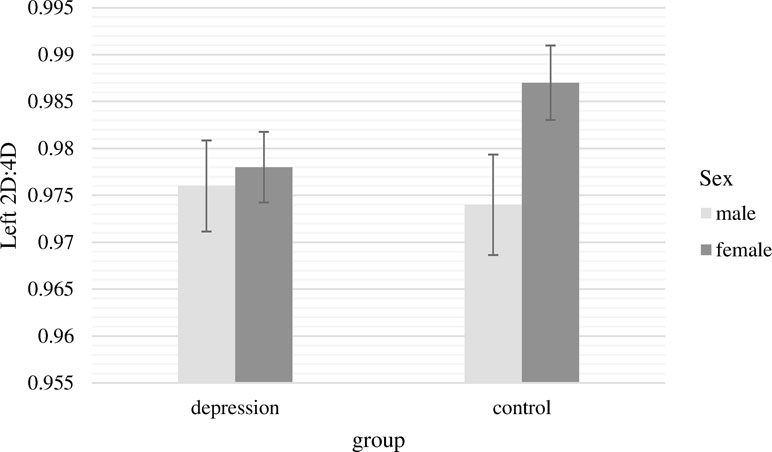

Thus, in the present study we asked whether gay men with different ASR preferences may differ in 2D:4D. A growing body of work indicates that anal sex role (ASR) preferences may serve as a proxy for subgroups of gay men who differ in development and gender conformity 6, 7, 8, 9.

Given the association with 2D:4D and gender roles among female sexual orientation, we hypothesized that a subset of gay men who are more gender nonconforming may show a larger, less male-typical, 2D:4D than more gender conforming gay men. In contrast, the data do not support a role for prenatal androgens in the development of differences in sexual orientation among men, as concluded by the same two meta-analyses 4, 5. A role for prenatal androgens may be particularly pertinent for gender nonconforming lesbians-self-identified “butch” lesbians have a lower digit ratio than self-identified “femme” lesbians. The literature has been consistent for female sexual orientation-lesbians have a lower (more male-typical) 2D:4D than heterosexual women in numerous studies and two meta-analyses 3. To test whether prenatal androgens are associated with human sexual orientation, an approximate retrospective measure of prenatal androgen, the ratio of the length of the index finger (2D) divided by the length of the ring finger (4D), has been measured among men and women with a same-sex sexual orientation and compared to heterosexual counterparts. One theory of sexual orientation is the neuroendocrine hypothesis 2, based on the findings that among mammalian species studied in the lab, androgens in early development organize masculine sexual preferences in adulthood. One of the largest sex differences in human behavior is sexual orientation-on average males tend to be attracted to females whereas females tend to be attracted to males, with only 2–10% of the population same-sex oriented 1. Overall, results support a role for prenatal androgens, as approximated by digit ratios, in influencing the sexual orientation and GNC of a subset of gay men. Differences were found between non-exclusive and exclusive same-sex attraction and GNC, and ASR group differences on digit ratios do not reach significance when all non-heterosexual men are included in the analyses, suggesting greater heterogeneity in the development of non-exclusive same-sex sexual orientations. We then found that Tops have a lower (male-typical) average right-hand digit ratio than Bottoms, and that among all gay men the right-hand 2D:4D correlated with GNC, indicating that a higher (female-typical) 2D:4D is associated with increased GNC. First, we replicated the finding that gay men with a receptive ASR preference (bottoms) report greater gender nonconformity (GNC) compared to gay men with an insertive ASR preference (tops). ASR was used as a proxy for subgroups because ASR groups tend to differ in other measures affected by brain sexual differentiation, such as gender conformity. Here, we asked whether an indirect indication of prenatal androgen exposure, 2D:4D, differs between subsets of gay men delineated by anal sex role (ASR). However, in humans, retrospective markers of prenatal androgens have only been associated with gynephilia among women, but not with androphilia among men. Among non-human mammals, exposure to androgens during critical periods of development leads to gynephilia (attraction to females), whereas the absence or low levels of prenatal androgens leads to androphilia (attraction to males).


 0 kommentar(er)
0 kommentar(er)
